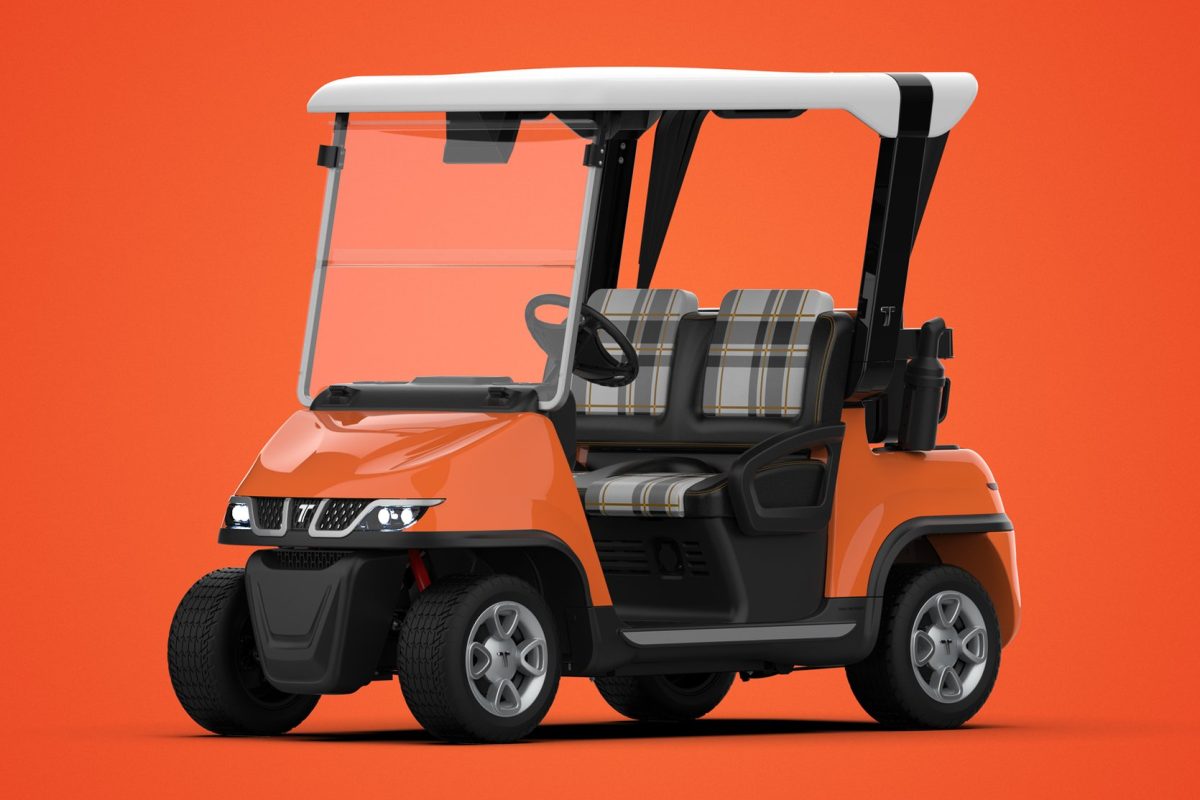-
Shopping Tools
-
Care & Maintenance
-
About
-
Dealer Login
Cruise in freedom with TARA Spirit Air! Eco-friendly, maintenance-free and built for smooth riders, they’re perfect for neighboorhood trips, community cruising, and beyond. Zero emissions, total convenience—just charge up and go!
Experience the TARA Spirit Plus, a top-tier golf cart powered by lithium-ion and equipped with an optional GPS system, essential golf accessories, and comfort features like a luxury seat and sturdy aluminum canopy. Its adjustable steering, aluminum chassis, and disc brakes ensure superior control and durability, perfect for any golf course or turf friendly communities.
Tara Roadster 2+2 is powered by a 6.3 kW motor paired with an electromagnetic brake, offering reliable performance and safe braking. The efficient 48V 160Ah lithium battery, complemented by a 25A onboard charger, ensures the cart is always ready for use, providing extended operational capacity without frequent recharges.

In 2025, the golf cart industry is set to undergo a major transformation as electric models become the standard. Focus on safety, convenience, and comfort will define the top golf carts of the year, offering a more efficient, eco-friendly experience.
As we move into 2025, the trend in the golf cart market is clear: electric models are taking over. With a growing focus on environmental sustainability, more golfers are making the switch to electric golf carts. These vehicles offer significant advantages, including reduced carbon footprints, lower operating costs, and quieter rides. With advancements in battery technology, electric golf carts are becoming more efficient and accessible than ever before.
When you’re looking to buy a golf cart, it’s essential to find golf cart dealers near me. This way, you can quickly check if your preferred model is in stock and see the actual cart in person without delay.

If your budget allows, opting for a full purchase can be a smart investment. Not only will you have complete ownership and the freedom to customize the golf cart to suit your needs, but you’ll also enjoy the long-term cost savings of avoiding rental or leasing fees. And if, after some time, you decide it’s not the right fit, you can easily resell it on the second-hand market, where well-maintained golf carts often retain strong resale value, allowing you to recover a significant portion of your initial cost.

Financing can relieve current cash flow pressures, offering greater flexibility for your operations. See below for a detailed look at its advantages.
Golf Cart Financing: Why It is a Smart Option and Its Benefits
Currently, about 50% to 60% of the materials in an EV battery can be recycled, depending on the recycling method and technology used. This includes the extraction of valuable metals like lithium and cobalt, which can be reused in the production of new batteries or other products.
Lead-acid batteries come in three main types: flooded (wet cell), AGM (Absorbent Glass Mat), and gel cell. You can identify them by design and maintenance needs—flooded batteries have removable caps for adding water, AGM batteries are sealed with glass mat separators and require no topping up, and gel batteries use a silica-based gel electrolyte, are fully sealed, and have labels indicating “gel.”
One of the most appealing features of lithium golf cart batteries is their exceptional lifespan. On average, high-quality lithium batteries can last between 8 to 12 years, depending on usage habits, maintenance, charging practices, and environmental conditions.
Cleaning your golf cart batteries is an important part of maintenance, but it’s crucial to know the right methods. Using a power washer to clean golf cart batteries is not recommended, as the high pressure can cause water to enter electrical components, potentially leading to damage and malfunction.
If your golf cart is running slow despite installing new batteries, there could be several underlying issues, from improper installation to faulty components. By troubleshooting potential causes, such as checking the battery connections, ensuring the motor and controller are working properly, and inspecting the tire pressure, you can resolve many common problems.
To repair a flooded golf cart, first disconnect the battery for safety, then carefully inspect and dry all electrical components using a towel and compressed air. Remove and dry the seats, check the motor and controller for water intrusion, and clean or replace any corroded connectors. If the battery compartment was submerged, clean the terminals and ensure all wiring is intact before reconnecting. Finally, allow the cart to fully dry in a well-ventilated area before testing to prevent short circuits or further damage.
To fix a golf cart forward/reverse switch, first disconnect the battery to avoid electrical hazards. Remove the switch cover and inspect for burnt contacts, loose wires, or corrosion. Clean any corrosion with a wire brush or contact cleaner, and tighten or replace any loose or damaged connections. If the internal contacts are worn or pitted, replace the switch assembly. Once repairs are complete, reassemble the cover, reconnect the battery, and test the cart in both forward and reverse to ensure smooth operation.
Reviving golf cart batteries with Epsom salt can be a cost-effective way to improve the performance of old or sluggish batteries. By using a simple mixture of Epsom salt and distilled water, you can clean the lead plates inside the battery cells, potentially extending their lifespan and improving their efficiency.
An electric golf cart may sputter due to several common issues. Weak or failing batteries are the most frequent cause—if the charge is low or the battery cells are degraded, the cart won’t receive consistent power. Corroded or loose battery cables and terminals can also interrupt current flow, leading to sputtering. In addition, dirty or faulty speed controllers, worn brushes in the motor, or damaged solenoids can cause inconsistent acceleration. For carts with older wiring, frayed or damaged wires may intermittently break the circuit. Start by checking battery health and connections, then inspect the motor, controller, and wiring for signs of wear or damage.
To fix scratches on a golf cart body, start by cleaning the affected area with soap and water to remove dirt and debris. For shallow scratches, use a polishing compound or rubbing compound to buff out the mark, applying it with a soft cloth in a circular motion. For deeper scratches, sand the area lightly with fine-grit sandpaper, then apply a touch-up paint that matches the cart’s color. Once the paint dries, use a clear coat to protect the repair. Finally, buff the area with a soft cloth to restore shine and blend the repair with the rest of the body.
To clean mildew off golf cart seats, start by brushing off any loose mildew with a soft brush or cloth. Mix a cleaning solution of mild soap and water, or use a mixture of one part white vinegar to one part water. Apply the solution to the affected areas using a sponge or cloth, gently scrubbing the mildew stains. For stubborn spots, use a mild fabric cleaner or upholstery cleaner. After cleaning, wipe the seats with a damp cloth to remove excess solution, and allow the seats to air dry completely in a well-ventilated area to prevent further mildew growth.
To grease wheel bearings on a golf cart, start by lifting the cart and removing the wheels. Once the wheels are off, locate the bearings in the wheel hubs. Clean any old grease or dirt from the bearings using a rag and a mild solvent. Apply a high-quality wheel bearing grease to the bearings, making sure to pack them thoroughly. Reassemble the wheel hub and reinstall the wheels, ensuring the bearings are properly aligned. Spin the wheels by hand to distribute the grease evenly, and repeat the process for all four wheels to ensure smooth, efficient operation.
To fix golf cart headlights, first check the bulbs to ensure they aren’t burned out. If the bulbs are fine, inspect the wiring for any loose connections, frayed wires, or corrosion, particularly at the battery, switch, and headlight connectors. Clean any corrosion with a wire brush or contact cleaner, and tighten any loose connections. If the wiring appears intact, check the headlight switch and fuse. Replace any blown fuses or faulty switches. If the issue persists, the problem could lie in the wiring harness or the headlight socket, which may need to be repaired or replaced.
To get a replacement golf cart key, first check the manufacturer or dealership where the cart was purchased, as they can often provide a new key using the cart’s serial number. If you don’t have the original key or the serial number, you can contact the manufacturer directly or visit an authorized service center for a replacement. Another option is to take the ignition switch to a locksmith who specializes in golf carts, as they may be able to create a new key based on the lock’s code.
To align a golf cart steering wheel, start by checking the alignment of the front wheels. If the wheels are misaligned, they may need to be adjusted using the tie rods. Lift the cart, then loosen the tie rod nuts and adjust the length of the rods to ensure the wheels are pointing straight ahead. Once the wheels are aligned, center the steering wheel and tighten the tie rod nuts. If the steering wheel is off-center after adjusting the wheels, you may need to adjust the steering shaft or steering box. Always test the steering to ensure it operates smoothly and the wheels are aligned correctly.
